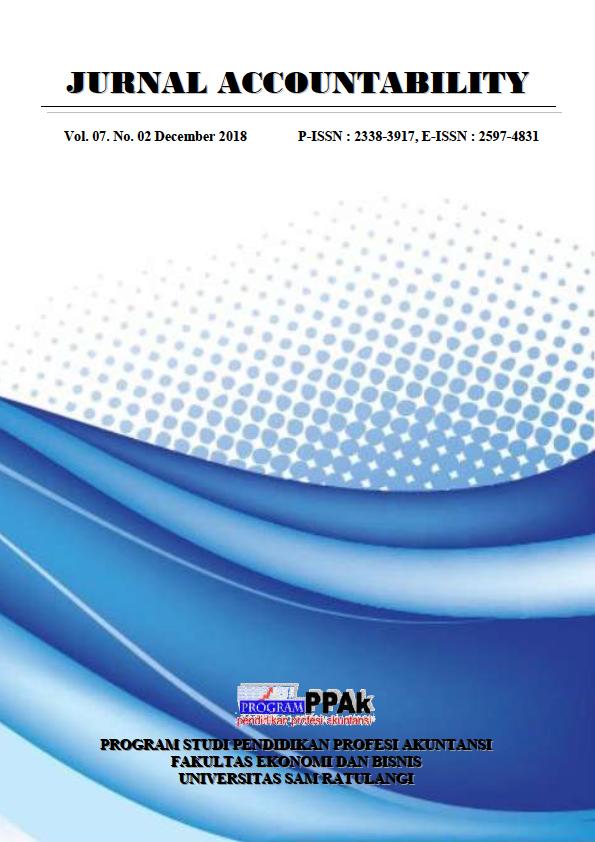THE EFFECT OF CURRENT RATIO, DEBT TO EQUITY RATIO, TOWARD RETURN ON ASSETS (CASE STUDY ON CONSUMER GOODS COMPANY)
Keywords:
current ratio, debt to equity ratio, return on assetsAbstract
This study aims to detect the effect liquidity ratio, leverage ratio and profitability on consumer goods companies listing on the Indonesia Stock Exchange 2014 – 2017. The object of this study is all consumer goods companies listing on the Indonesia Stock Exchange which publishes audited financial statements for fiscal year 2014 – 2017, which amounted to 24 (twenty four) companies. The sampling technique is by using purposive sampling method where the sample is determined based on certain criteria determined by the researcher and has limitations in terms of generalization. The sample of research is 42 (forty two companies) Data collection method using documentation method Data analysis technique used is descriptive quantitative analysis using current ratio, debt to equity ratio and return on assets.
Downloads
Published
Issue
Section
License
The articles published in Jurnal Accountability are licensed under Creative Commons Attribution-NonCommercial 4.0 International with authors as copyright holders.
Â

This work is licensed under a Creative Commons Attribution-NonCommercial 4.0 International License.
Â
- Share — copy and redistribute the material in any medium or format.
- Adapt — remix, transform, and build upon the material.
- The licensor cannot revoke these freedoms as long as you follow the license terms.
- Attribution — You must give appropriate credit, provide a link to the license, and indicate if changes were made. You may do so in any reasonable manner, but not in any way that suggests the licensor endorses you or your use.
- NonCommercial — You may not use the material for commercial purposes.
- No additional restrictions — You may not apply legal terms or technological measures that legally restrict others from doing anything the license permits.
- You do not have to comply with the license for elements of the material in the public domain or where your use is permitted by an applicable exception or limitation.
- No warranties are given. The license may not give you all of the permissions necessary for your intended use. For example, other rights such as publicity, privacy, or moral rights may limit how you use the material.


